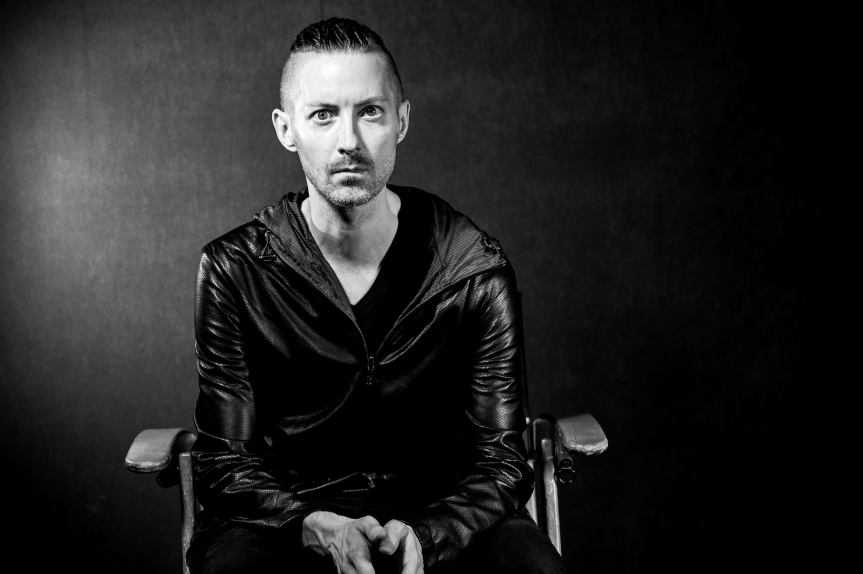The Balance between Observation and Empathy while filming Death
Ian Thomas Ash has been a regular guest of Nippon Connection for several years now and already won two prizes with his documentaries. In 2013, he received the NIPPON VISIONS AWARD for his Fukushima documentary A2-B-C as well as the NIPPON VISIONS AUDIENCE AWARD in 2015 for -1287. A US citizen, he received his MA in Film and Television Production from the University of Bristol and has lived in Japan for over 15 years now. In his films, he deals with the difficult topics of death, dying, and the health system in Japan. This year he is once again attending the Nippon Connection Film Festival to present his latest documentary, Sending Off.
When and how did you first get into filmmaking?
When I was in university, I majored in English literature and had wanted to become a writer or playwright. At that time, I did not even own my own computer or camera, so being a filmmaker was something I had never even dreamt about. It was not until I moved to Japan after graduating from university in 2000, when I got my first computer and borrowed my friend’s camera, that I began seriously thinking about filmmaking. After making several passion projects on my own, I decided to attend film school. In the five years after earning an MA in Film and Television Production in 2005, I made two feature documentaries, but it was not until after the 2011 Great East Japan Earthquake that I started making documentary films full-time. Since then, my focus has been mainly on topics dealing broadly with health and medicine in Japan.
Where did you get the idea for your latest film?
After the 2011 nuclear meltdown in Fukushima, I made two feature documentaries about the health of children living in the areas contaminated by radiation. During my frequent visits to the prefecture, I met Dr. Kaoru Konta. In addition to her passion to protect children, I also learned about her passion for home health care. After accompanying her to patients’ homes for several days, I asked her if I could make a documentary film about her work and relationship with her patients. I pitched this story to NHK World for their documentary series “Inside Lens” and was commissioned to make a 28-minute program that was called “Dying at Home”. After that program aired, I continued filming with Dr. Konta for 6 months, and 「おみおくり〜Sending Off〜」is the feature documentary version of her story.

What was the biggest challenge while making your latest film?
“The biggest challenge for me was trying to balance filmmaking technique- recording the best sound and picture possible- with what would be appropriate in the sensitive situations I was filming. As my intention is always to make a completely observational documentary (although one could argue that I am not always successful in doing so), when filming in situations where someone is sick or dying, I use relatively little equipment so that the filming process is a unobtrusive as possible. For example, I only use available (natural) light, and do not work with a separate sound recordist. The result may be a technically imperfect film, but my hope is that the rawness of what I am documenting can be felt through the sparseness of equipment used to capture it.”
映画作りを始めたのはいつ頃ですか? どのようなきっかけでしたか?
私は大学在学中、英文学を専攻しており、作家や脚本家になりたいと思っていました。当時自身のコンピュータやカメラさえ持っておらず、映画監督になるとは夢にも思いませんでした。私が映画監督を真剣に考え始めたのは、2000年に大学を卒業して日本に移り、最初のコンピュータを手に入れ、友人からカメラを借りたりしてからのことでした。いくつか自身で制作を試みた後、私は大学院に通うことにしました。2005年に大学院を卒業し、映画・テレビ制作の修士号を取得してから5年の間に、2本の長編ドキュメンタリーを制作しましたが、フルタイムでドキュメンタリー映画を制作するようになったのは、2011年の東日本大震災の後でした。それ以来、私は主に日本の健康と医療を扱うトピックに焦点を当ててきました。
新作のアイディアはどこで得たものですか。
2011年、福島県の原子力発電所においてメルトダウンが発生した後、放射線で汚染された地域に住む子供たちの健康について、2本の長編ドキュメンタリーを制作しました。頻繁に福島県を訪問するうちに、今田かおる先生に出会いました。子供を守るという先生の情熱に加え、私は熱心に在宅医療に取り組む姿についても学びました。先生と数日間、患者宅への訪問に同行するうち、先生の活動と患者との関係についてのドキュメンタリー映画を作らせて頂けないか尋ねました。この話をNHK Worldのドキュメンタリーシリーズ「Inside Lens」に持ちかけたところ、「Dying at Home」という28分の番組作成を依頼されました。また番組放映後も6ヵ月間撮影を続けました。「おみおくり〜Sending Off〜」は、今田先生の物語の長編ドキュメンタリー版となります。
今回の映画制作・撮影中での一番大きいなチャレンジは何でしたか?
私にとって最大の課題だったのは、最高の音源と映像を記録することと、繊細さが求められる状況での適切な撮影をすることとのバランスを保つことでした。いつも成功するとは限らないのですが、私は常に完全な第3者の立場でいようとしており、病を患った方や死期の近い方を撮影する現場では、撮影機器を最小限にすることで、できる限り目立たないように撮影しています。例えば、自然光のみを利用し、別途録音担当を設けることはしていません。その結果、技術的には不完全なフィルムとなるかもしれませんが、願わくは、記録しているものの生々しさを、その機器の粗密さを通して感じ取って頂ければと思っています。
Sending Off at the 19th Nippon Connection Filmfestival
Japan 2019, 79 min.
Friday, May 31, 16:30, Naxoshalle Kino
with director Ian Thomas Ash
Click here for Tickets
Check out the Trailer:

